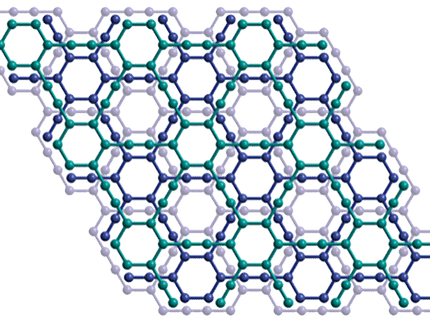UC San Diego Physicists Reveal Secrets of Newest Form of Carbon
Advertisement
Using one of the world's most powerful sources of man-made radiation, physicists from UC San Diego, Columbia University and Lawrence Berkeley National Laboratory have uncovered new secrets about the properties of graphene - a form of pure carbon that may one day replace the silicon in computers, televisions, mobile phones and other common electronic devices.
Graphene - a single layer of carbon atoms arranged in a honeycombed lattice - has a number of advantages over silicon. Because it is an optically transparent conductor of electricity, graphene could be used to replace current liquid crystal displays that employ thin metal-oxide films based on indium, a rare metal that is becoming increasingly expensive and likely to be in short supply within a decade. The problem for scientists is that not much is known about its optical and electronic properties because graphene, which was discovered only four years ago, has resisted traditional forms of spectroscopy.
In the journal Nature-Physics, the physicists report that they used the Advanced Light Source at the Berkeley lab to reveal some of those secrets. The researchers said that their study shows that the electrons in graphene strongly interact not only with the honeycomb lattice, but also with each other.
"Infrared and optical experiments are capable of providing some of the most valuable insights into the electronic properties of materials, including interactions between electrons in a material," said Dimitri Basov, a professor of physics at UC San Diego who headed the project. "But it was extremely difficult to measure the absorption of light in a single monolayer of graphene, because not much light is absorbed. To do this, we had to start with a very bright light. It was spectroscopy to the extreme."
"It took some difficult experimental work to make this measurement," said Basov. "It was by far the most complicated measurement we have ever done."
Other news from the department science
Most read news
More news from our other portals
See the theme worlds for related content
Topic World Spectroscopy
Investigation with spectroscopy gives us unique insights into the composition and structure of materials. From UV-Vis spectroscopy to infrared and Raman spectroscopy to fluorescence and atomic absorption spectroscopy, spectroscopy offers us a wide range of analytical techniques to precisely characterize substances. Immerse yourself in the fascinating world of spectroscopy!

Topic World Spectroscopy
Investigation with spectroscopy gives us unique insights into the composition and structure of materials. From UV-Vis spectroscopy to infrared and Raman spectroscopy to fluorescence and atomic absorption spectroscopy, spectroscopy offers us a wide range of analytical techniques to precisely characterize substances. Immerse yourself in the fascinating world of spectroscopy!

























































